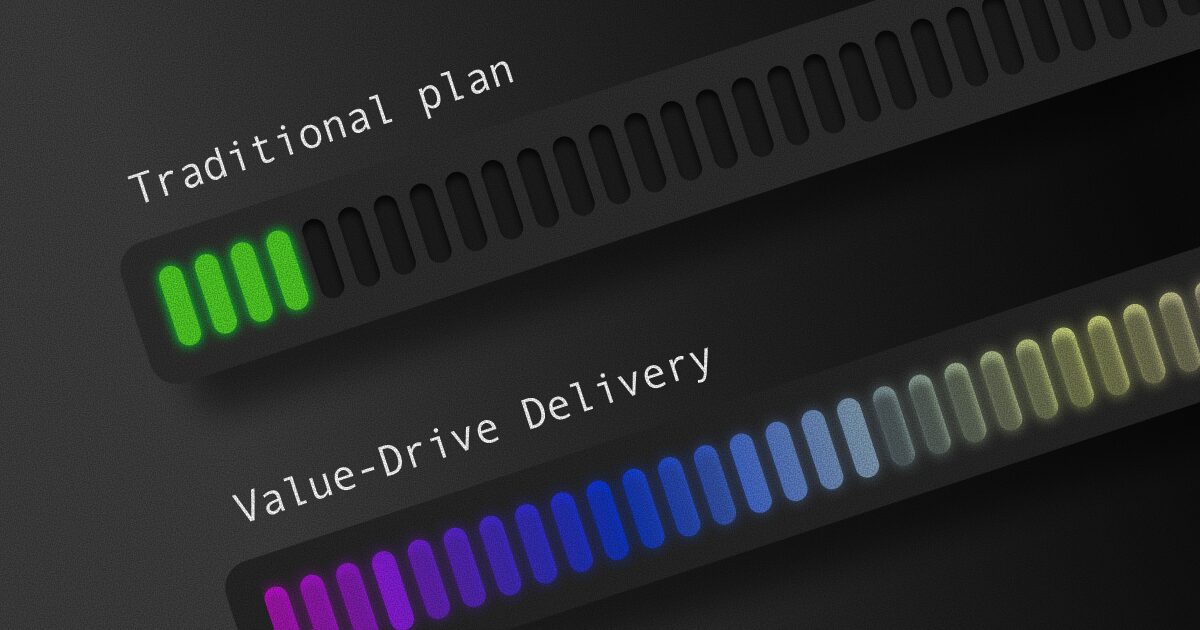April 9, 2025 - 4 min
Benefits of Continuous Integration – Why It’s Critical for Modern Software Teams

Continuous Integration (CI) has become one of the key practices in software development. But what exactly is it, what are the benefits of continuous integration and why should this be an indispensable practice in your team, if it isn’t already? Let’s learn more about this topic in our new article.
What Is Continuous Integration?
Continuous integration is a practice where developers integrate code regularly, with the code being stored in the common codebase. The merging of code is usually done multiple times a day.
As the new code is added, a series of tests is run automatically to ensure that the new changes do not cause any problems in the system. If a problem does occur, one of the key benefits of CI is the feedback you get right away, so the bugs can be fixed more easily.
Without CI, developers would have to communicate each new code contribution to other project participants. And that includes coordination not only with developers, but also with the operations team as well. Continuous integration makes this process easier by testing every change in the codebase.
Both developers and DevOps engineers use CI, but the difference is that developers use CI on a daily basis, while the DevOps teams build and maintain those CI systems to keep all processes run smoothly.
Let’s learn more about the benefits of continuous integration below.
1) Faster Bug Detection
Early error detection is one of the biggest advantages of continuous integration. Errors are detected practically immediately, and this way they do not pile up and are not detected when it’s already too late. Without CI, it would be more difficult to find the cause and where the bug came up, meanwhile with CI, bugs are easier to find and can be resolved much faster.
Another benefit of early bug detection is a shorter development cycle. When code issues are resolved earlier, this also reduces delays in product delivery and helps everyone involved in the project to meet deadlines more easily.
2) Integration Issues? No More
You’ve probably heard of merge conflicts. We’re talking about situations when not-so-well aligned developers within the team try to merge the code, and this leads to errors in the code, integration problems, and sometimes even to the loss of the code.
In contrast to this outdated principle, continuous integration is a practice in which developers frequently commit code to the repository, which leads to much less frequent occurrence of integration problems. Why? Because the system checks every time whether everything is in order, so it can react more promptly and correct errors accordingly.

3) Automated Testing
Automated testing and continuous integration go hand in hand, and are almost always paired. This means that the code is tested using testing tools such as GitHub Actions, GitLab CI/CD or Jenkins.
It is a well-known fact that automated tests are more precise and much more reliable than manual tests. Why? Simply because with automated tests you reduce the possibility of human error. In the same way, this type of testing helps much faster than manual testing if a new feature creates an error and eventually leads to major problems in the development of your software product.
4) More Transparency & Better Communication
If continuous integration is part of your work routine, then you know that the chance to have to deal with (sometimes way too frequent) meetings and calls with teammates is much lower. How so? Because CI tools have clear reports that show the current project status.
In other words, everyone in the team can be on the same page regarding the code updates; for example, if a code change in the repository — code commit, led to an error. So, with this, another benefit of continuous integration, the project workflow is more transparent and the need for meetings and pinging colleagues is greatly reduced. Win-win situation for everyone.

5) Teams Are Easier To Scale
We already mentioned how CI facilitates work among teammates. But what if the team gets bigger, an that brings along more frequent code contributions, which can lead to code overlap? That’s what CI is here for, immediately integrating and testing inputs and changes. So, when increasing the number of people in the team, CI makes it easier so that everyone works on the same version of the project-related code. New team member? No problem. They can start working on the project immediately and have the overall picture of what’s going on code-wise.
6) Continuous Delivery & Deployment
As a rule, continuous integration is inherently connected with continuous delivery and continuous deployment. The difference between CI and continuous delivery is that with CI, the focus is on the constant merging of code into a common codebase. On the other hand, continuous delivery, puts focus on code changes that are automatically built, tested, and deployed to production.
Then comes the continuous deployment. An approach where changes are deployed automatically when they pass the testing, making the release process automated.
The result of the joint use of these three practices is a shorter feedback loop and a faster and easier iteration of your software product.
7) Higher Quality Product as the End Result
Continuing from the previous chapter, and to put it simply, CI (together with CD and continuous deployment) leads to a higher quality software product. And that also includes higher cost reduction, more efficient infrastructure, lighter backlog, and improved maintainability overall.
So, using this DevOps approach of gradually building the code and constantly testing changes, the end result is a much better product and, in turn, a much happier customer.
Conclusion
To sum it up, CI has become an established practice in the software development and DevOps field, without which today’s software development process is unthinkable. From a much shorter time for detecting bugs, greatly reduced integration issues, and greater transparency, to greater scalability and, finally, a higher quality end product — these are all benefits of continuous integration.
If you are looking for a reliable partner with skilled people in setting up your CI/CD practices, or you want your software product development process to be faster and more reliable, feel free to schedule a consultation with us.
We are here to help you — whether it’s consulting or a future project we’ll be working on together.
Give Kudos by sharing the post!






